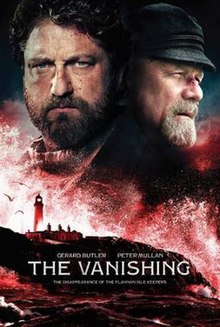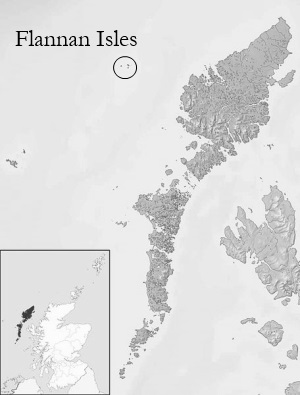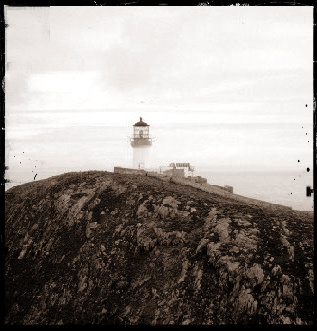Scottish psychological thriller based on the real mystery of the Flannan Isles Lighthouse
A Scottish psychological thriller The Vanishing will open in cinemas around Scotland and other Celtic countries at the end of March, having already been released in the United States. Filmed in the south-west of Scotland and Firth of Clyde, the film was directed by Kristoffer Nyholm and written by Celyn Jones and Joe Bone. It stars Scottish actors Gerard Butler and Peter Mullan along with Connor Ryan Swindells. It is set in the Flannan Isles (Scottish Gaelic: Na h-Eileanan Flannach). Located in Scotland’s Outer Hebrides (Na h-Eileanan Siar), the islands stand just over 20 miles (32 kilometres) from the Isle of Lewis (Leòdhas). The story begins with three lighthouse keepers starting their six-week shift tending the remote Flannan Isles Lighthouse.
The story is inspired by a real mystery involving the disappearance of three lighthouse keepers from the lighthouse on Eilean Mòr, which is the the highest point of the island group. All three keepers, Thomas Marshall, James Ducat and Donald Macarthur disappeared without trace in December 1900. When the vessel Hesperus arrived at Eilean Mòr on St Stephen’s Day (26th December), they found the lighthouse abandoned. The doors to the lighthouse were closed, the clocks were stopped, the beds were unmade and fire not lit. Lamps were all cleaned and filled and the only thing out of place was a chair by the kitchen table that had been knocked over. A further unusual thing was that two of the keeper’s oilskins were missing, but the third set was still in place. Eilean Mòr was searched, but nothing found. No bodies were ever recovered.
Events such as this will always attract speculation of the supernatural. It is easy to see why. These remote isolated rocky islands battered by the howling winds of the Atlantic. The high waves driven relentlessly against the cliff faces. The constant screeching of seabirds sounding like lost souls in a storm. It is said that keepers posted to the light house in Eilean Mòr after the tragedy never felt at ease there. It was thought by many to have a dark and foreboding atmosphere and few lamented the automation of the lighthouse in 1971 which meant it no longer had to be manned. However, even before the disappearance of the lighthouse keepers, many in the Gaelic Hebridean community had viewed the islands as a place of superstition and bad luck. Until the lighthouse had been built between 1895 and 1899 it is probable that Na h-Eileanan Flannach had not been inhabited permanently since the days of the Celtic Church. The Celtic Church was predominant across the Celtic speaking world in the early middle ages (5th to the 10th century). On the island of Eilean Mòr is the ruin of an old chapel dedicated to St Flannan.
It is good that the Flannan Islands remain uninhabited for they are now a sanctuary for birds. Although they bear the brunt of severe Atlantic storms they can also be a place of great beauty. They have been designated as a Site of Special Scientific Interest. A protected area of conservation providing a nesting place for many seabirds, including Atlantic puffins, northern fulmars, European storm-petrels, Leach's petrels, common shag, black-legged kittiwakes and gannets. Around the islands there can be seen Minke and pilot whales, as well as Risso's and other species of dolphin. As for the Mystery of Scotland’s Flannan Isles Lighthouse? It is one that is never likely to be solved.








